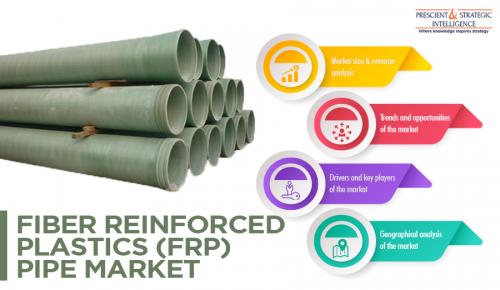Fiber Reinforced Plastics Pipe Sales Predicted to Shoot-Up in Coming Years

Despite a strong focus on reducing the consumption of fossil fuels, the demand for crude oil and natural gas keeps increasing. For instance, oil imports to India grew from $70.72 billion in 2016–17 to $101.4 billion in value in 2019–20, says the India Brand Equity Foundation (IBEF). Similarly, according to the Organisation for Economic Co-operation and Development (OECD), worldwide crude oil production increased from 3.41 million tonnes of oil equivalent (Mtoe) in 2000 to 3.97 Mtoe in 2017. This has been possible because of the rampant exploration and production (E&P) activities being undertaken around the world.
As per P&S Intelligence, the rising E&P activities will be one of the many reasons behind the growth of the fiber-reinforced plastics pipe market value to $3.8 billion by 2023 from $2,134.4 million in 2016, at an 8.4% CAGR between 2017 and 2023. This is because these pipes are widely used in the oil & gas industry as they conform to the safety requirements this sector has to meet. These pipes possess high tensile and impact strength and fire resistance, which make them suitable and reliable for oil & gas companies.
For the same reason, FRP pipes are widely integrated in chemical and industrial facilities. With the growing population and its increasing disposable income, the demand for a wide array of industrial products and chemicals is rising. Moreover, governments around the world are taking initiatives to boost their industrial sector, by offering incentives for setting up manufacturing plants. This is the most apparent in developing countries, which are trying to boost their economy by attracting foreign direct investments in the industrial sector. Thus, with the construction of new chemical processing and manufacturing plants, the demand for FRP pipes is rising.
Another key application of these pipes is water and wastewater management. With the urban population set to account for 68% of the total by 2050, compared to 55% in 2018, as per the 2018 World Urbanization Prospects report of the United Nations (UN), the existing water supply system is witnessing increasing pressure. Not only is urbanization creating the demand for a greater availability of potable water, but also leading to a rise in the volume of the effluents being discharged into waterbodies. This is driving the integration of FRP pipes at water utilities, as well as water treatment plants.
Currently, the FRP pipe market is led by Asia-Pacific (APAC), which is home to the most people and largest manufacturing sector in the world. In addition, urbanization is also the fastest in this region, with the UN saying that among the countries leading this demographic shift in the coming years, China and India will be two of the most significant. Already, Tokyo, Delhi, and Shanghai are number one, two, and three, respectively, on the list of the most-populated cities in the world, with Dhaka, Mumbai, and Beijing also prominent names on it.
Hence, with the booming urban population driving industrial production and demand for potable water, the adoption of FRP pipes will burgeon.
Advertise on APSense
This advertising space is available.
Post Your Ad Here
Post Your Ad Here
Comments